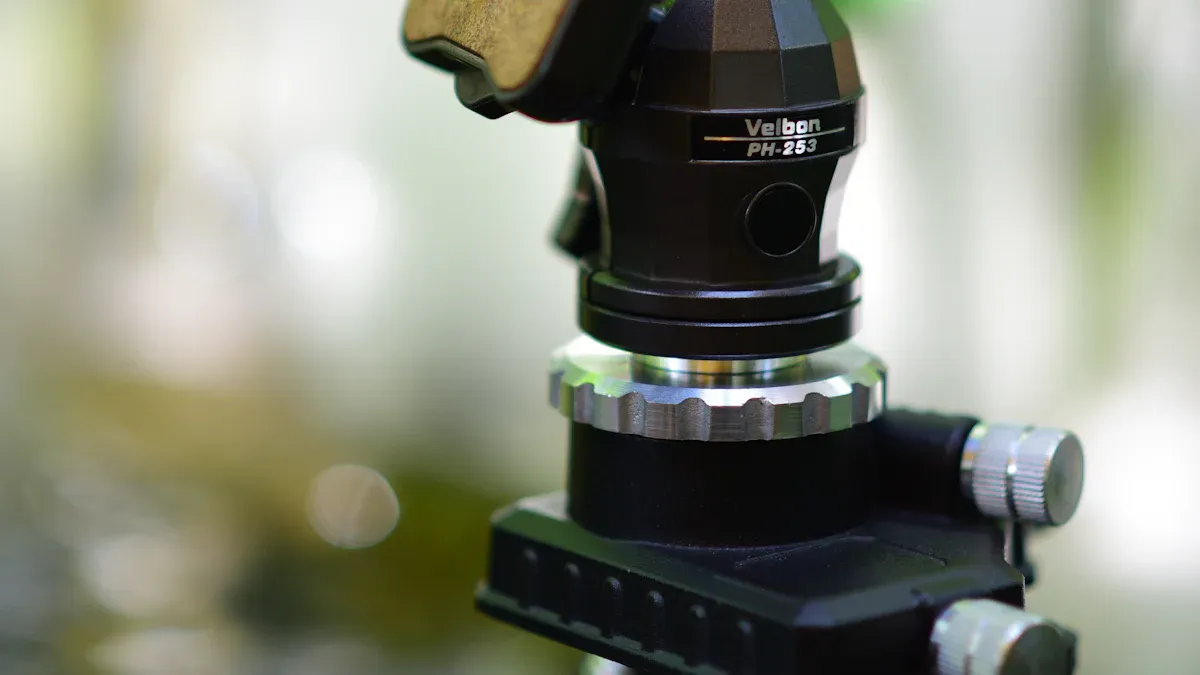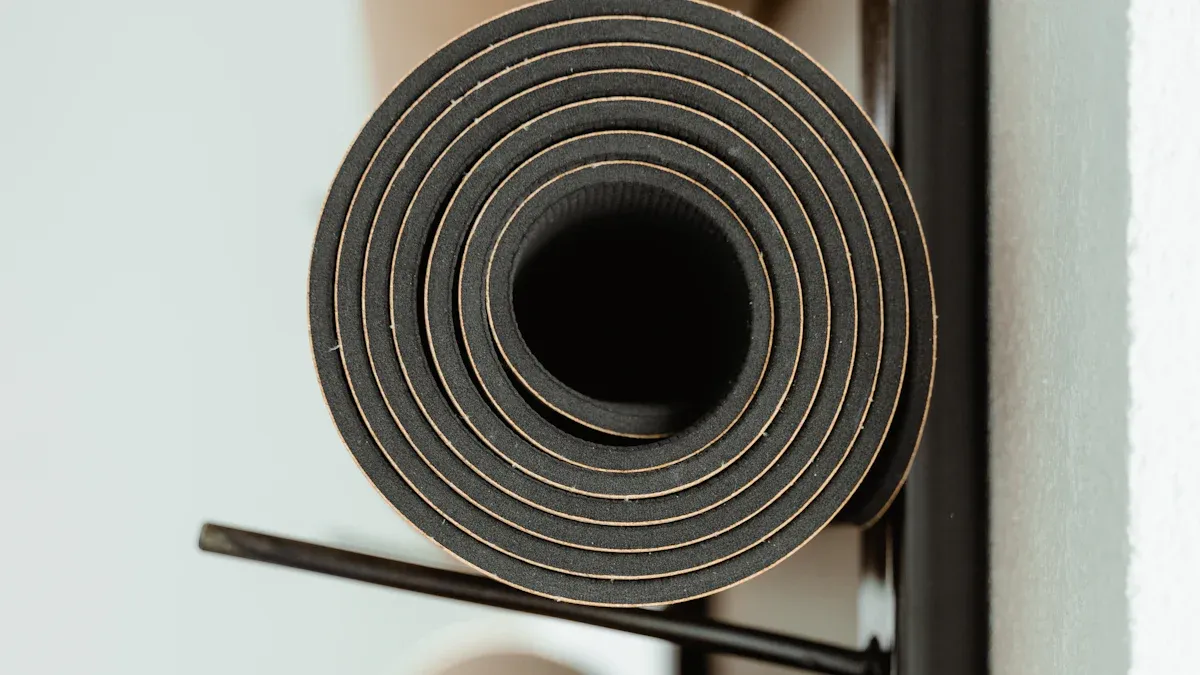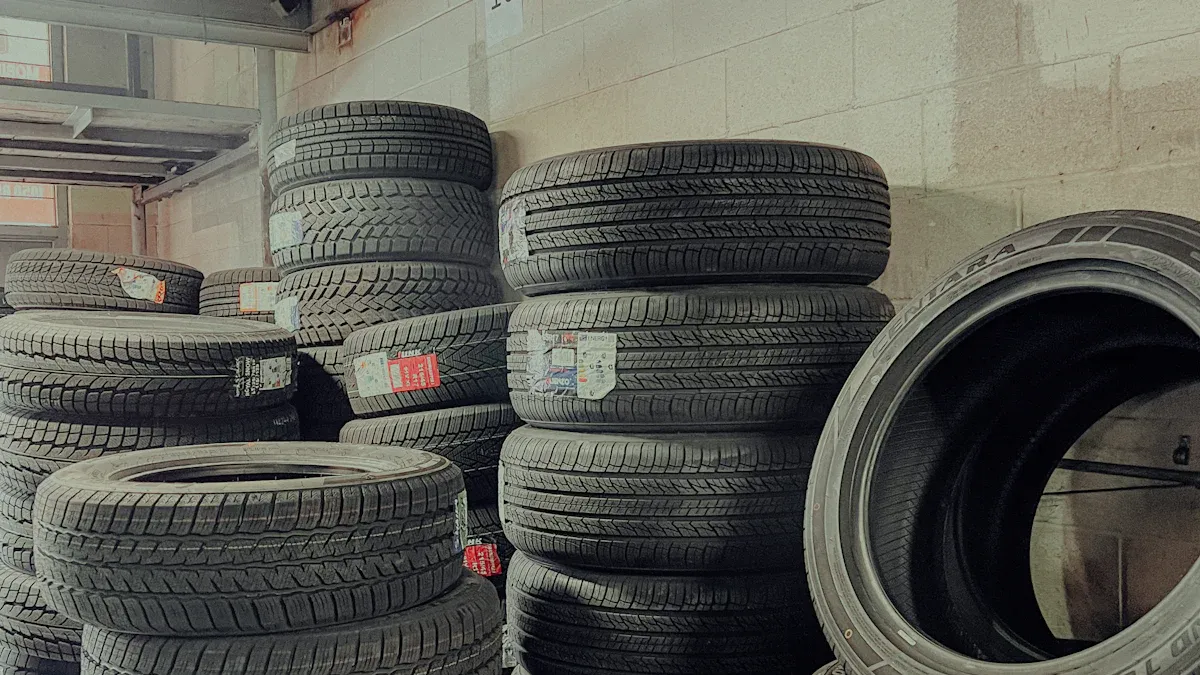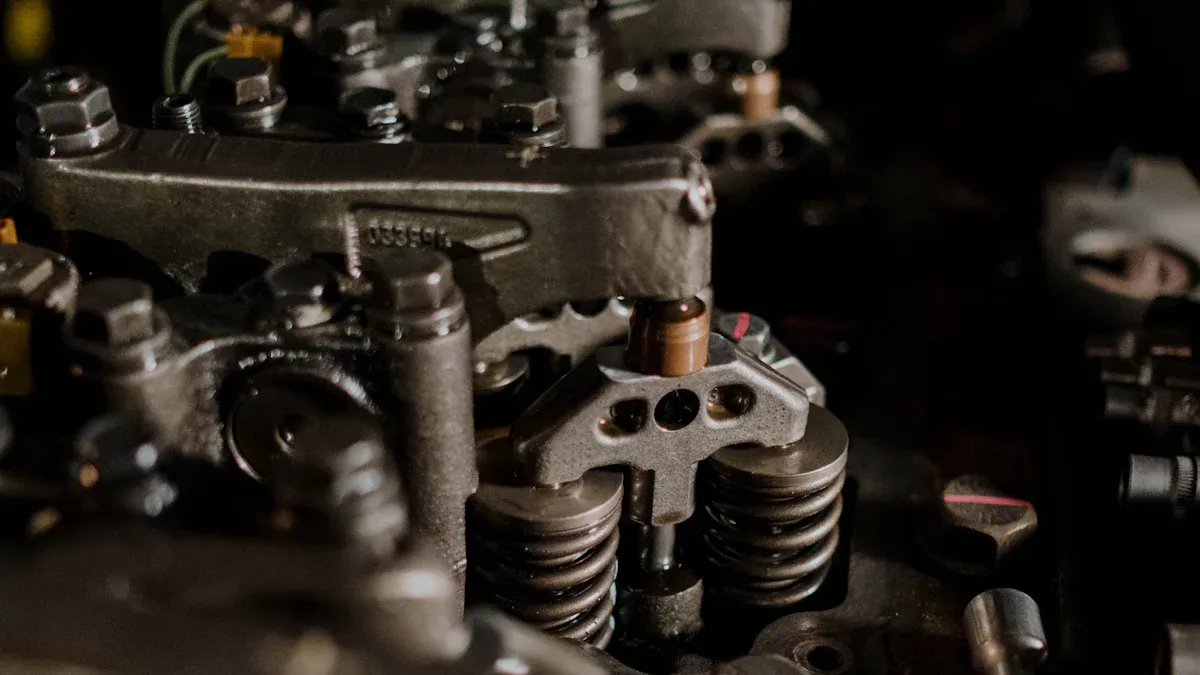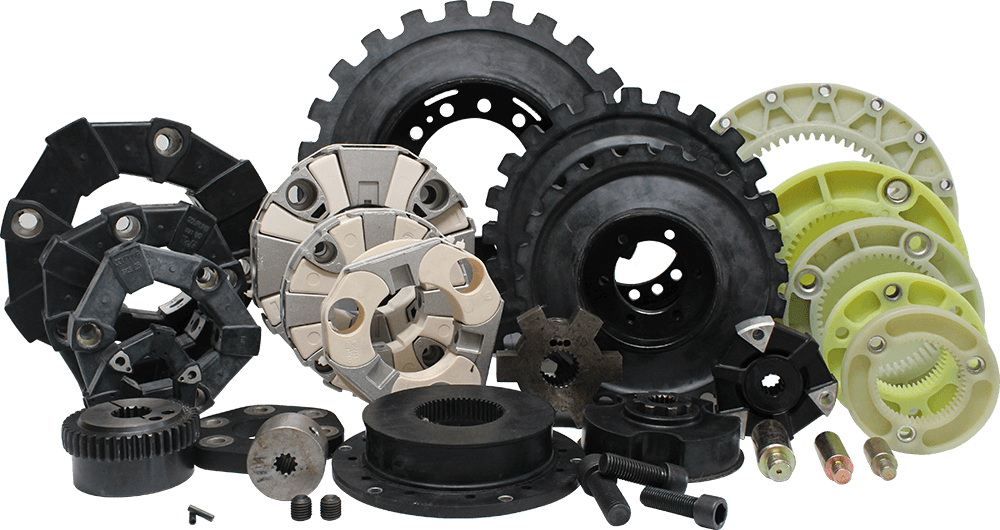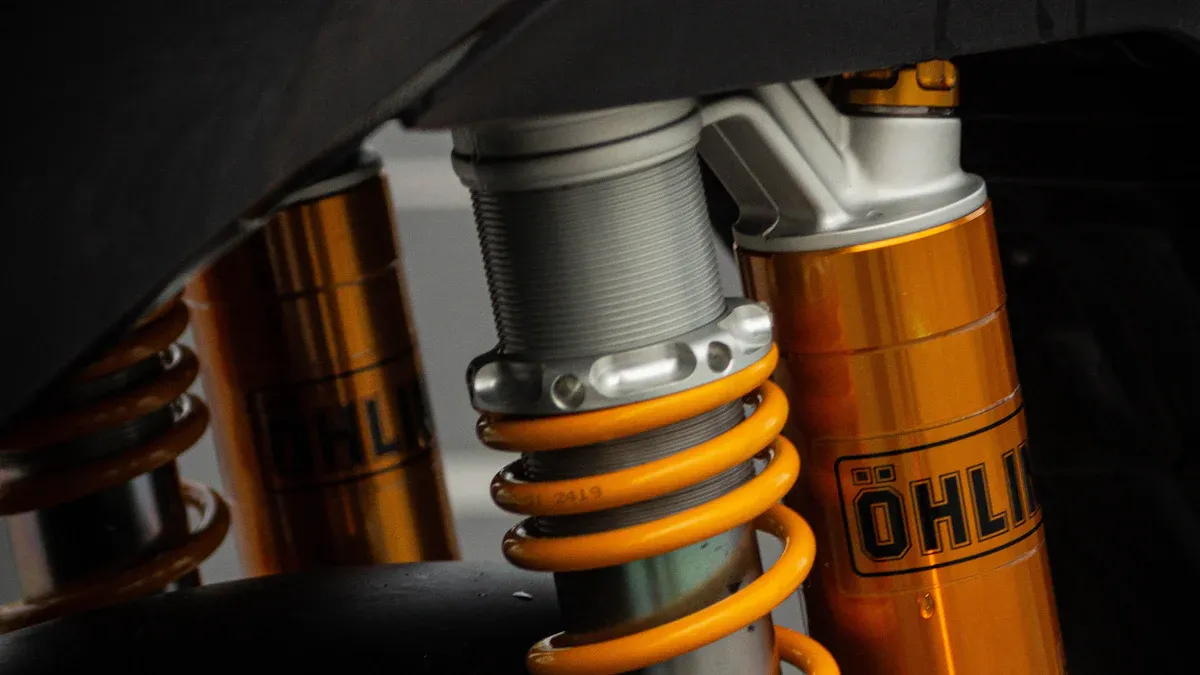
You might notice machines move or make noise when working. Vibro mounts help fix this issue. These devices are also called vibration isolation mounts. They control extra movement and sound. They use tough rubber and metal parts to soak up and stop vibration. Vibro mounts act as passive isolation devices. They protect your equipment and make your workspace more quiet.
Key Takeaways
Vibro mounts help stop machines from shaking and being loud. They do this by soaking up vibrations with rubber and metal parts. There are different kinds of mounts like rubber, spring, and combination types. Each type works for different machines and vibration problems. Using vibro mounts keeps equipment safe and cuts down on repair costs. They also make work areas quieter and safer for everyone. You need to pick the right mount for your machine’s weight and how much it vibrates. The place where the machine is also matters. To keep vibro mounts working well, install them the right way and check them often. This helps machines last longer.
Vibro Mounts Overview
What Are Vibro Mounts
Vibro mounts help stop machines from shaking and making noise. They work like soft pads between machines and the floor. Most vibro mounts use both rubber and metal. The rubber part soaks up shakes and bumps. The metal part keeps the mount strong and helps it stay in place.
Here are some materials used in vibro mounts and vibration isolation mounts:
Natural rubber, nitrile (Buna-N), neoprene, EPDM, and other elastomers
Thermoplastic elastomers (TPE) for better vibration control
Steel, stainless steel, and zinc-plated carbon steel for hardware
Metal cups or steel parts to shield rubber from sunlight and chemicals
You can pick different rubber or metal types for different jobs. EPDM rubber is good for boats because it does not rust in salt water. Some mounts have special shapes or extra parts to fit certain machines or hold more weight.
Vibration Isolation Mounts
Vibration isolation mounts stop shakes from spreading in machines. You put these mounts between your machine and the ground. The rubber or elastomer inside acts like a spring and a shock absorber. When the machine moves, the mount takes in the energy and turns some into heat. This keeps the shaking from moving to other parts.
Think of vibration isolation mounts like a spring and weight system. The rubber or spring has its own natural shake speed. If your machine shakes faster than this, the mount blocks most of the movement. The damping part helps make the shaking smaller, so your machine stays steady.
Tip: The right vibration isolation mounts help machines last longer and make your workspace quieter.
You can find vibration mounts in factories, cars, and air conditioners. Anti-vibration mounts protect important parts and help machines run well. There are many kinds of vibration isolation mounts for different needs. Some use only rubber, while others use rubber with springs or metal for more support.
Vibro mounts, vibration mounts, and anti-vibration mounts all help lower shaking and noise. They are passive isolation devices, so they do not need power. You just install them, and they start working right away.
How Vibration Mounts Work
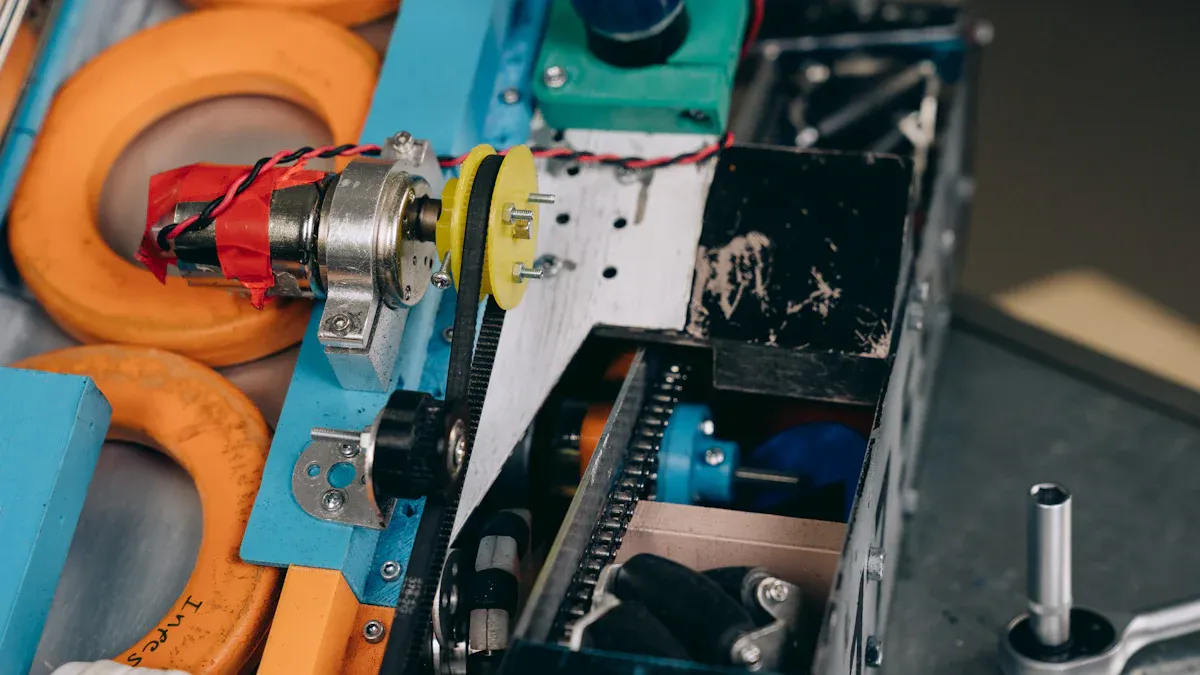
Vibration Absorption
When you use vibration mounts, you count on rubber’s special features. Rubber in vibration isolation mounts is viscoelastic. This means it acts like a spring and also like a thick liquid. When your machine shakes, the rubber stretches and bends. The energy from the shaking does not come back all at once. Some of the energy turns into heat inside the rubber. This happens because of friction and hysteresis. The big, bendy molecules in rubber move around in a messy way when the machine vibrates fast. This stops energy from building up and helps soak up the shaking.
Rubber is great for damping vibration. It quickly takes in vibration energy and changes it to heat. The viscoelastic properties mix elastic and viscous actions. Some vibration energy stays for a short time, but most turns into heat. This lowers both shaking and noise. Engineers make vibration mounts to balance stiffness and damping. They pick the best rubber shape and material for each job and machine.
Note: Rubber mounts use their own damping to turn vibration energy into heat. This keeps your equipment steady and your workspace quieter.
Isolation Mechanism
You want to stop vibration from moving from your machine to the floor. Vibration isolation mounts work as a barrier. They separate the machine from its base. The rubber or spring inside the mount soaks up shocks and reduces vibration. This keeps energy from moving to the building or other machines. You protect your machine and the area around it from damage and noise.
How well vibration isolation mounts work depends on a few things. Here is a table that shows what matters most:
Factor | Description | Effect on Isolation Effectiveness |
|---|---|---|
Frequency Ratio | How fast the machine shakes compared to the mount’s natural shake speed | Best isolation happens when this ratio is high |
Damping Ratio | How much the mount can dampen vibration | More damping means less vibration passes through |
Stiffness | How hard it is to bend the mount | High stiffness makes isolation worse; low stiffness helps |
Mass | How heavy the thing being isolated is | Heavier things are harder to isolate; lighter things are easier |
The damping ratio is very important. It shows how well the mount can cut down vibration. The formula for damping ratio is ζ = c / (2√(k m)), where c is the damping, k is the stiffness, and m is the mass. You can see how these parts work together to control vibration.
When you put in vibration mounts, you give your equipment a soft support. This support soaks up shocks and stops vibration from spreading. Spring vibration isolation mounts use springs to take in and let out energy. Rubber vibration isolation mounts use their soft bodies to do the same thing. Both types help with shock absorption and keep your machines running well.
You should also think about these things when picking vibration isolation mounts:
Frequency range: The range of vibration speeds you need to block.
Load capacity: The most weight the mount can hold.
Damping ratio: How much damping your machine needs.
Environmental conditions: Things like temperature, humidity, and chemicals that could affect the mount.
Vibration isolation mounts work by soaking up and blocking vibration energy. They keep your equipment safe and your workspace quiet. When you know how vibration isolation mounts work, you can pick the right one for your needs.
Types of Vibration Isolation Mounts
Rubber Vibration Mounts
Rubber vibration mounts are used in many machines. These mounts use soft, stretchy materials. The rubber squishes and takes in vibration energy. When your machine shakes or gets hit, rubber mounts protect it. They soak up the force and help lower noise. You can find these mounts in cars and home appliances. They also work in devices that need gentle care.
Rubber anti-vibration mounts can handle different weights and places. The table below shows how rubber materials are different:
Material Type | Key Properties | Application Suitability |
|---|---|---|
Natural Rubber | Good at fighting wear, squishes well, sticks to metal, cheap, works from -40°F to 165°F, not good with oil or solvents | Dry places, general vibration control, little oil around |
Neoprene | Fights wear well, handles oil and solvents, works from -50°F to 250°F | Tough places, some chemicals and heat |
Nitrile | Great with oil and solvents, bounces back well, works from -30°F to 250°F | Lots of oil, solvents, or hydraulic fluids |
Silicone | Squishes well, bends in hot or cold, not good at fighting wear | Very hot or cold places, not much wear |
Rubber mounts go back to their shape after being squished. Vulcanization makes them strong and bendy. You get mounts that last and work well. Rubber mounts bend more and take in shock better than spring mounts. Air mounts use air for control, but rubber mounts cost less and work for most jobs.
Tip: Rubber anti-vibration mounts often have metal parts. This makes them easy to put in and helps them last longer.
Spring Vibration Mounts
Spring vibration mounts use metal springs to stop vibration and take in shock. Pick spring mounts for machines that need low natural shake speeds, usually 3-6 Hz. These mounts let machines move more because they are not stiff. You get better vibration control for big, heavy machines.
Spring mounts work best in places like air systems, compressors, and pumps. The table below shows their main features:
Feature/Aspect | Spring Vibration Mounts (Y-2-100 Series) |
|---|---|
Natural Frequency Range | 3-6 Hz (low natural frequency) |
Static Deflection | High (about one inch deflection) |
Preferred For | Noise and vibration control on concrete or wooden floors |
Typical Applications | Air Conditioning Equipment, Compressors, Fans, Pumps, Chillers |
Advantage Over Rubber Mounts | Gets lower shake speeds because it bends more |
Spring mounts work better at low shake speeds and bend more. You get great control over vibration and shock in important places. Rubber mounts are better for fast shakes and moving loads. Spring mounts are best for heavy, still machines.
Combination Vibration Mounts
Combination vibration mounts use both rubber and springs. You get the good parts of each material. Rubber takes in vibration and shock and turns energy into heat. Springs hold up heavy machines and help with fast shakes.
Rubber gives you bendiness, strength, and good vibration control.
Springs help with heavy machines and fast shocks.
These mounts work well for big jobs like factory machines and air systems.
Combination mounts keep your machines safe, help them work better, and make your space quieter.
Pick combination anti-vibration mounts when you need shock control and support for heavy things. These mounts help you get the best results in tough places.
Applications of Vibro Mounts
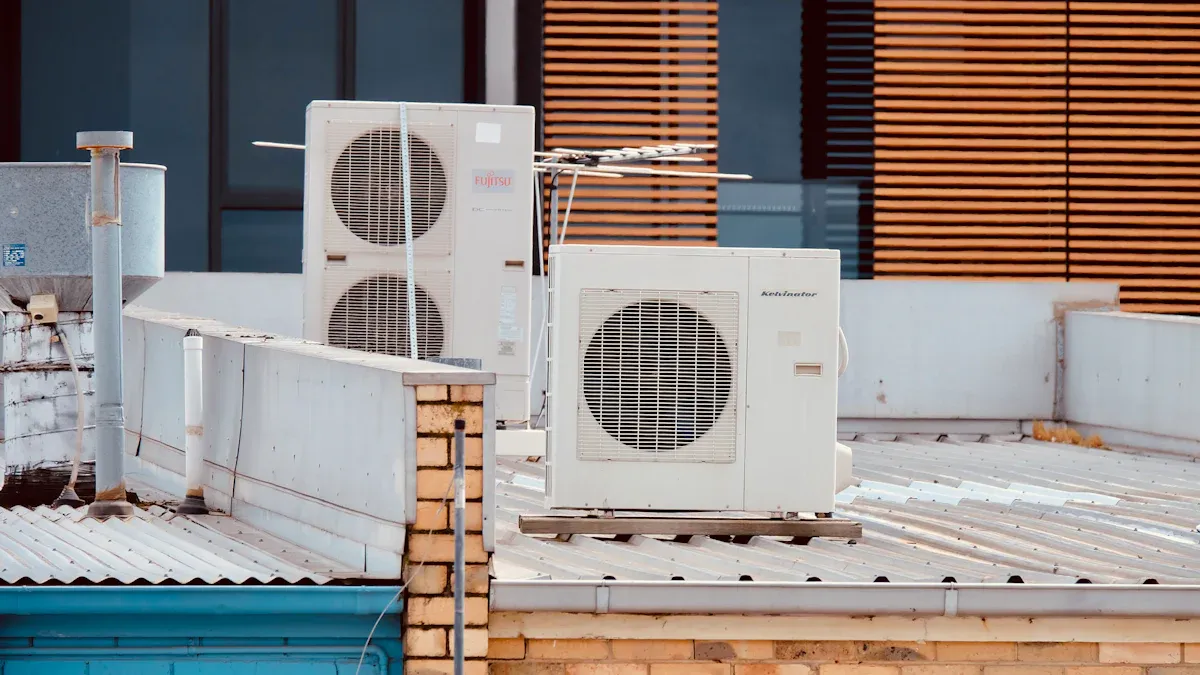
Industrial Machinery
Vibro mounts are used in many factories and workshops. They help machines work better by stopping too much shaking. These mounts protect things like CNC machines, compressors, and big motors from harm and loud sounds. They also help with crushers, shakers, and mining machines. Sensitive machines stay steady and safe with these mounts.
Here is a table that shows where vibro mounts are used in different jobs:
Industry | Typical Machinery/Equipment Using Vibro Mounts |
|---|---|
Automotive | Engines, transmissions, exhaust systems, suspension components |
Industrial & Manufacturing | CNC machines, compressors, heavy motors, generators, pumps |
HVAC & Electrical | Air handlers, fans, electrical enclosures, switchboards, transformers |
Aerospace & Marine | Navigation instruments, cabin fixtures, marine engines, onboard electronics |
Vibro mounts help lower shaking and make machines last longer.
HVAC and Fans
Vibro mounts are important in heating, ventilation, and air conditioning systems. You put these mounts on fans, air handlers, and ducts. They take in shaking from moving parts and air flow. This helps lower noise and keeps your building nice.
Tip: Vibro mounts can soak up almost all extra shaking in HVAC systems.
They stop damage to equipment and the building. They also help your HVAC system work quietly and last a long time. You can use rubber or spring mounts for different kinds of shaking and machine sizes.
Automotive and Motor Mounts
You see vibro mounts in cars and trucks. These mounts hold engines and keep shaking away from the car body. Rubber and metal together make the mounts strong and bendy. The mounts take in shaking and noise from the engine, so rides feel smoother.
Vibro mounts keep your car safe from damage and problems. They make riding more comfy and help cars last longer. The mounts work with both gas and electric engines, blocking shaking at many speeds.
Pumps and Pipework
Vibro mounts help pumps and pipes stay steady. These mounts stop shaking from moving to floors and walls. They keep pumps safe and lower stress in pipes. Isolation hangers and soft connectors help pipes stay quiet and work well.
Vibro mounts help pumps work without trouble.
They stop leaks and breaks in pipe systems.
Your equipment works better and lasts longer.
You can get expert advice to pick the best mounts for your pumps and pipes.
Benefits of Vibration Isolation
Noise Reduction
Vibration isolation mounts help make your workspace quieter. These mounts catch vibrations before they reach walls or floors. When vibrations stop, the noise also goes away. This helps control loud sounds in places like factories. Vibration isolation mounts soak up shakes from machines and keep them from spreading. Less shaking means less noise around you. Rubber standoffs and anti-vibration buffers work like shock absorbers. They help heavy machines make less noise. You get a safer and calmer place to work. Vibration isolation works well with other tools, like soundproof covers.
Tip: Using vibration isolation mounts helps you focus and makes your workspace more comfortable.
Equipment Protection
Vibration isolation mounts keep your machines safe from harm. If machines shake too much, parts can wear out or break. These mounts take in shocks and lower stress on your equipment. You will see fewer breakdowns and machines that last longer. Vibration isolation mounts can make your machines last twice as long. They lower repair costs by about 18% and cut downtime in half. Different mounts, like rubber bobbin or spring mounts, protect your machines from damage. You avoid early problems and keep your equipment working well.
Note: Using vibration isolation mounts early helps you avoid expensive repairs and keeps your machines safe.
Improved Performance
Your machines work better with vibration isolation mounts. These mounts keep sensitive parts, like sensors and electronics, safe from shaking. Your machines run smoother and more accurately. Vibration isolation mounts help your machines stay steady and precise. They lower wear and tear, so your equipment works better for longer. You get quieter operation, which is important for HVAC systems and cars. Machines use less energy because they do not waste power fighting vibrations. Your workspace becomes safer and more efficient.
Using vibration isolation mounts makes your equipment more accurate, saves money on repairs, and creates a better place to work.
Choosing Vibration Mounts
Application Needs
You need to match the right vibration mount to your equipment. Start by looking at what your machine does and where it works. Some machines move, while others stay still. Moving parts need stronger mounts. Heavy machines need mounts that can hold more weight. You should also check how many mounting points your equipment has. More mounting points help spread the weight and reduce stress on each mount. The center of gravity matters too. If your machine is not balanced, it may shake more.
Here is a table to help you see what to consider:
Factor | Explanation |
|---|---|
Moving or stationary components | Moving parts need tougher mounts for durability. |
Weight of component | Heavier machines need stronger mounts. |
Number of mounting points | More points spread the load and reduce stress. |
Center of gravity | A balanced machine works better with less vibration. |
Source of vibration | Knowing the vibration frequency helps you pick the right mount. |
Environmental conditions | Heat, cold, or chemicals can affect mount choice. |
Tip: Always check the equipment manual or ask an expert if you are unsure.
Load and Vibration Levels
You must know how much weight your mount will hold and how much vibration your machine makes. The right mount keeps your machine steady and safe. If you use a mount that is too weak, it may break. If it is too stiff, it will not block vibration well. Look at the natural frequency, stiffness, and damping of the mount. These features help you get the best isolation.
Factor/Parameter | Influence on Mount Selection and Performance |
|---|---|
Natural Frequency | Should be lower than the machine’s vibration frequency. |
Stiffness | Lower stiffness blocks more vibration. |
Load Capacity | Must match or exceed your machine’s weight. |
Damping | Controls how much vibration passes through. |
Vibration Frequency Levels | High vibration needs softer mounts. |
Environmental Conditions | Choose materials that last in your work area. |
Space Constraints | Make sure the mount fits your machine and space. |
Note: You can ask suppliers like YNF Rubber for help. They offer many types of vibration mounts for different needs.
Installation and Maintenance
Proper installation helps your vibration mounts work well. Clean all surfaces before you install the mounts. Place each mount in the right spot, following the instructions. Tighten the mounts so they do not move. After you install them, test your machine to make sure the vibration is lower.
You should check your mounts often. Look for cracks, tears, or changes in shape. Replace any damaged mounts right away. Keep a record of when you check and change your mounts. This helps your equipment last longer and work better.
Regular checks and good care keep your vibration mounts working their best.
Vibro mounts, which are also called vibration isolation mounts, help protect machines by soaking up and stopping vibrations. This means there is less noise, machines last longer, and your workspace is safer. These mounts work in many places, like factories, cars, and HVAC systems.
They keep machines from moving too much or getting damaged.
They make things quieter and help workers feel better.
They help you follow safety rules and spend less on repairs.
You can pick the best mount by thinking about weight, shaking, and where you use it. If you want good vibration control, YNF Rubber has many choices for different machines. Vibro mounts are an easy way to help your machines work well and keep your workplace safe.
FAQ
What is the main purpose of a vibro mount?
You use a vibro mount to stop vibration and noise from moving between your machine and the floor. This helps your equipment last longer and keeps your workspace quieter.
How do I choose the right vibration mount for my machine?
Check your machine’s weight, vibration level, and where you will use it. Look at the mount’s load capacity and material. If you need help, you can ask YNF Rubber for advice.
Can I install vibro mounts by myself?
Yes, you can install most vibro mounts with basic tools. Follow the instructions from the supplier. Make sure you place each mount in the right spot and tighten it well.
How often should I check or replace vibration mounts?
You should check your mounts every few months. Look for cracks, tears, or changes in shape. Replace any damaged mounts right away to keep your machine safe.
Where can I buy quality vibration isolation mounts?
You can buy quality mounts from trusted suppliers. YNF Rubber offers many types of vibration isolation mounts for different machines and needs.


